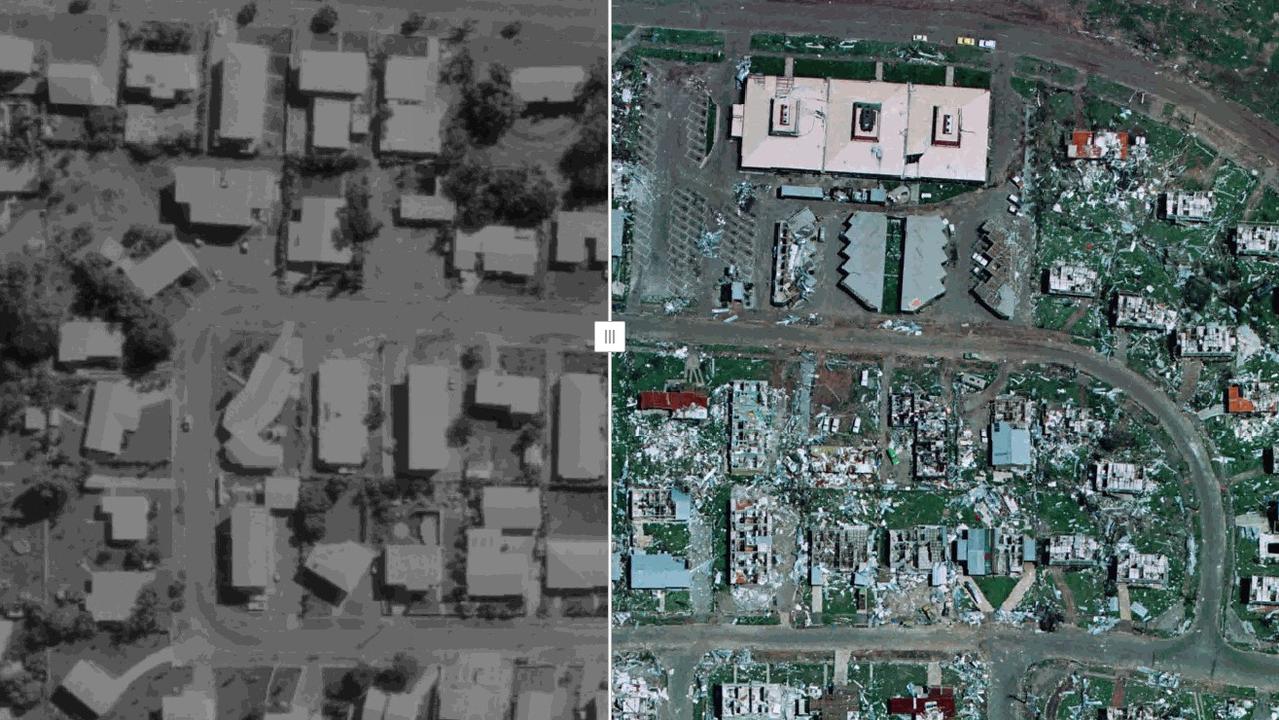Long-term Territorian reveals how Cyclone Tracy changed the Top End
Cyclone Tracy sparked several cultural, structural and vegetative changes in the Northern Territory. Check out the side-by-side comparison photos here.
Cyclone Tracy
Don't miss out on the headlines from Cyclone Tracy. Followed categories will be added to My News.
There is no question Cyclone Tracy irrevocably changed the city of Darwin, but there may be a silver lining amid the wreckage.
Long-term Territorian Robert Milliken said the category four cyclone started a “phenomenal” shift in the Top End.
Mr Milliken said there was no doubt in his mind Darwin was a sprawling country town before Cyclone Tracy, particularly during his childhood.
“I can remember that Smith St was a single bitumen road,” he said.
“Cavenagh St and Mitchell St were dirt, but I had free rein of the place as a kid.”
Mr Milliken said the city matured after it was flattened by the cyclone.
“It certainly grew up from that, to the city that it was, but it was still a country town,” he said.
“What I think Tracy did, more than anything, is it gave the city the ability to start again, and it is very, very few cities that get a chance to completely reinvent themselves.”
Mr Milliken said the city’s reset was one of the few good things to emerge from the disaster.
“It enabled the city planners to say, ‘well, we’ve effectively got a clean slate, apart from where the streets are, so we can have new building codes, we can totally rethink the design of the city’,” he said.
“Overnight, Darwin went from being a big country town to really being the capital city of the north.”
The city’s physical changes are clear, but Darwin’s sense of community also shifted, said Mr Milliken.
The “old Darwin” resident said the city’s small population and culture meant many people knew one another, or “you certainly know somebody who does know somebody”.
Thanks to Cyclone Tracy, however, two key changes shifted the Top End’s culture.
“One, a lot of people went south and didn’t come back,” Mr Milliken said.
“It certainly led to a culture of those that were new and were blow-ins, and those that were old.
“A lot of other people that were south came up, and for a two-year – or probably three-year – period, there was a lot of transient people just rotating through Darwin for a couple of months doing a job and gone.”
Museum and Art Gallery of the NT curator of Territory history Jared Archibald said the Top End had major structural changes after Cyclone Tracy.
“You had completely different ways of putting roofs on, but you also didn’t use fibre reinforced sheet or asbestos sheeting for walls anymore,” he said.
“You used steel, you had hold-down bolts through from the roof down to the slab, or on an upstairs house, down to the pillars.
“All of that changed, so housing before and housing after changed significantly but also was much stronger.”
Mr Archibald said ”the look of the town” also changed after the cyclone.
“Still the same roads and everything and the big building – there’s a lot more tall buildings now in the city – but even the ones that were there, it was just different,” he said.
“Even the way people planted gardens, gardens are very different now and African mahoganies were introduced.
“We’ve got massive mahoganies still, all around Darwin – they just weren’t here pre-cyclone.”




